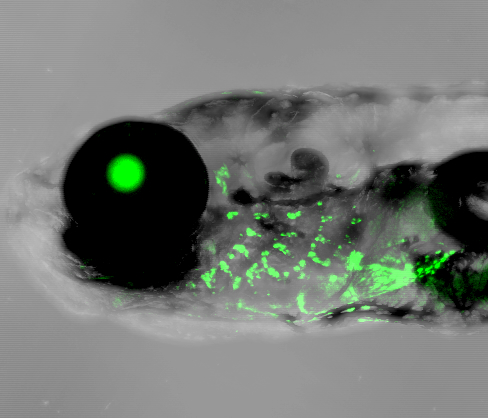Mammalian ears are pretty damn strange. For humans, they’re a bit unsightly, they’re made of cartilage yet somehow sneak in three bones, and they get bigger as we age. Now, we’ve got a new weird ear fact to add to the list: they started out as gills.
Our ears used to be gills?
The outer ear, specifically. That’s the news from a new USC Stem Cell study that was looking into the evolutionary origin of the mammalian outer ear.
“When we started the project, the evolutionary origin of the outer ear was a complete black box,” said corresponding author Gage Crump in a statement, who is a professor of stem cell biology and regenerative medicine at the Keck School of Medicine of USC.
“We had been studying the development and regeneration of the jawbones of fishes, and an inspiration for us was Stephen Jay Gould’s famous essay An earful of jaw, which laid out how fish jawbones transformed into the middle ear bones of mammals. This made us wonder whether the cartilaginous outer ear may also have arisen from some ancestral fish structure.”
The adventures of elastic cartilage
Pull your ear forward and it’ll ping back, thanks to the elastic cartilage it’s made up of. Elastic cartilage is actually quite rare as tissue types go, and a pivotal clue during the team’s investigations was the discovery that gills are also made of elastic cartilage.
We don’t find gills in the fossil record, and with good reason. They don’t mineralize, which is a crucial step in the fossilization process, and the same is true of ears. That means fossil evidence is hard to find, but the team had another idea.
They adopted a new approach spearheaded by first author Mathi Thiruppathy, a PhD student in the Crump lab, that focused on something called enhancers. These are gene control elements in the form of DNA sequences that can increase the transcription of genes, and they tend to be tissue specific.
Enhancers at the ready
By incorporating the enhancers that form the human outer ear into the genomes of zebrafish, the team were able to observe that they were specifically active in the fish’s gills. They then flipped the experiment on its head by creating transgenic mice with zebrafish gill enhancers in their genomes, and saw that they were active in the outer ear of the mice. Like a cross-species game of snap, it revealed a connection between two structures that to the naked eye look completely unrelated.

Human outer ear enhancer driving green fluorescence protein expression in the gills of a 2-week-old zebrafish.
Image credit: Mathi Thiruppathy and the Gage Crump Lab
They continued on their enhancer adventures next in tadpoles, and saw that the enhancers were again active in the gills. When they took a leap forward to green anoles, the gill enhancers were showing up in their ear canal. Tracking its progress, the cartilage got more and more complex until we arrive at the outer ear of mammals.
From horseshoe crabs to humans
Exactly when this journey to the ear began is still up for question, but it had previously been recognized that horseshoe crabs have cartilage-like tissues. The team were able to isolate an enhancer for these animals and popped it in zebrafish, turning up the surprise result that it was active in their gills. At an impressive nearly 450 million years old (evolutionarily speaking), this takes the origins of elastic gills back much further than previously thought. From ancient marine invertebrates that bendy stuff has scuttled all the way to the sides of our faces, and we have a shiny new method for future research to boot.
“This work provides a new chapter to the evolution of the mammalian ear,” said Crump. “While the middle ear arose from fish jawbones, the outer ear arose from cartilaginous gills. By comparing how the same gene control elements can drive development of gills and outer ears, the scientists introduce a new method of revealing how structures can dramatically change during evolution to perform new and unexpected functions.”
The study is published in the journal Nature.
Source Link: Your Outer Ear Used To Be A Bit Of Respiratory Equipment